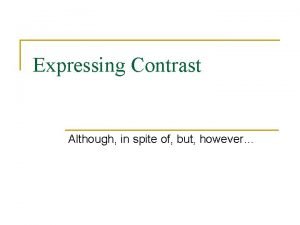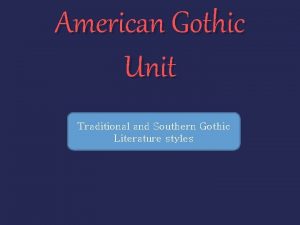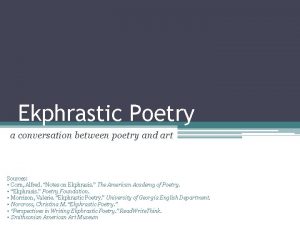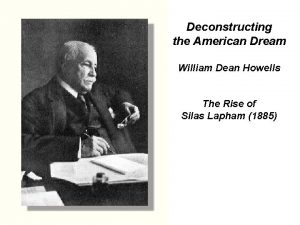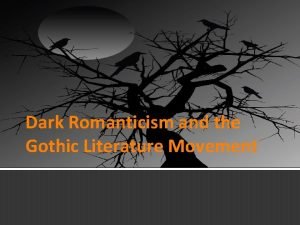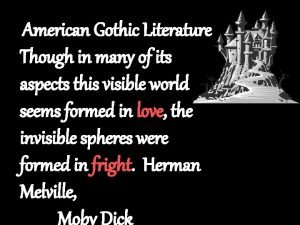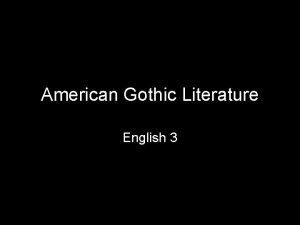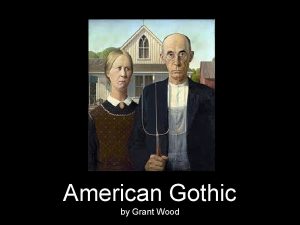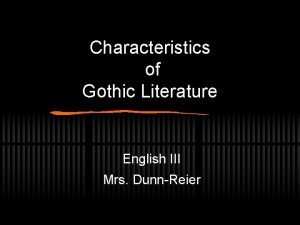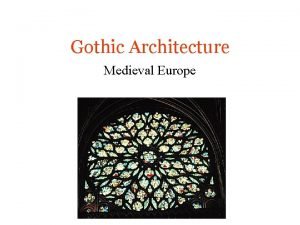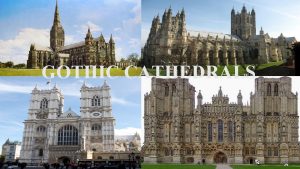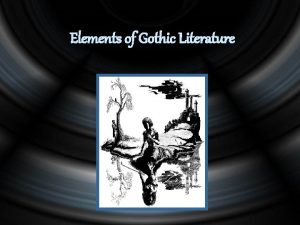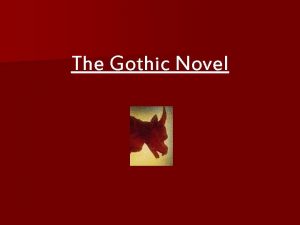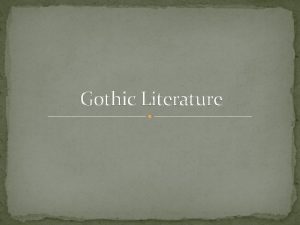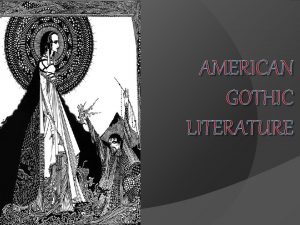American Gothic also called Though in many of











- Slides: 11

American Gothic (also called “ ”)

Though in many of its aspects this visible world seems formed in love, the invisible spheres were formed in fright. ~_______ (in Moby Dick)

What is Gothic? The name gothic actually comes from the architectural style of the ______. The ____ style, lack of symmetry, _____ gargoyles and _______ shapes are characteristics of this type of architecture.

Gothic Grew Out of… • • • The gothic grew out of Romanticism, which was a response to the _____ Movement. As the Romantics felt free from logic, they were free to explore ______, including the darkest side of it. In a way, you could say the original romantics explored beautiful dreams, whereas the gothic writers explored nightmares.

The Dark Romantics • When romantics saw individualism, gothic writers saw hope, vitality, a new way! • Gothic writers looked at the individual, and saw the potential for evil; they saw darkness.

Beauty and horror While Romantics were looking at the beauty of _______, gothic writers were envisioning the dark and scary forests and all the horrors, natural and _______, hidden within. Unlike the Romantics, the Dark Romantics acknowledged the evil of man and the horror of evil.

Romanticism Places Emphasis on… – the beauty and purity of nature – emotion over reason – belief in the natural goodness of man – belief that nature and simplicity = purity and cities and sophistication = corruption – belief in “The 5 I’s”- Imagination, Intuition, Innocence, Inner Experience, and Inspiration from nature/supernatural …and so does the gothic, just with a slant.

The Masters • By the 19 th century, gothic elements had taken over the work of _____ (considered the American master of the genre), Nathaniel Hawthorne (who had ties to the Salem witch trials), ______ (“The Legend of Sleepy Hollow”) and, in a more subtle way, Hermann Melville (Moby Dick). Gothic elements are also noticeable in Emily Dickinson’s poetry. • The gothic tradition continued in the 20 th century with authors like ______, _________….

Authors’ Distincitve Approaches • As one can glean from the painting “American Gothic, ” the horror of the mystery, horror, even terror of the genre is often subtly conveyed. • Author’s have applied unique styles to crafting gothic literature and conveying what really is horrific. • Hawthorne is different from Poe, for instance. Whereas Poe focused on the darkness of the mind, Hawthorne focused on the darkness of the soul and the human heart: vanity, betrayal, mistrust, hatred, etc.

Inheritance • The power of the gothic tradition hasn't really waned in all these years. • Anne Rice's 1973 novel 'Interview with the vampire' and particularly its film adaptation (1994) revitalized the genre for newer generations.

Inheritance • Today, we have Stephanie Meyer's glittery high school vampires, the works of Neil Gaiman (Coraline) and the films of Tim Burton (Sleepy Hollow, The Nightmare Before Christmas, The Corpse Bride), all feeding from a strong literary tradition. • As life imitates art, we have social groups derived from this art form: the Goths (the kids with eyeliner, not the East Germanic tribe).
